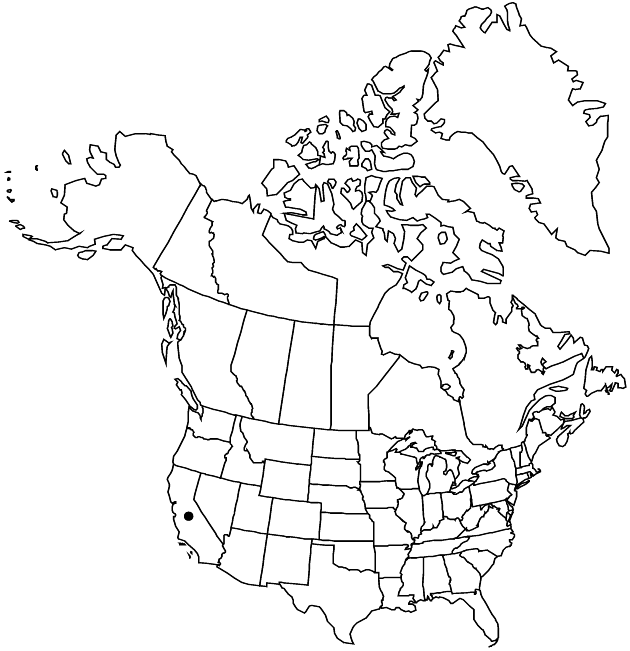Difference between revisions of "Lessingia nana"
in G. Bentham, Pl. Hartw., 315. 1849.
Common names: Dwarf lessingia
FNA>Volume Importer |
FNA>Volume Importer |
||
| Line 47: | Line 47: | ||
|publication year=1849 | |publication year=1849 | ||
|special status= | |special status= | ||
| − | |source xml=https://jpend@bitbucket.org/aafc-mbb/fna-data-curation.git/src/ | + | |source xml=https://jpend@bitbucket.org/aafc-mbb/fna-data-curation.git/src/f50eec43f223ca0e34566be0b046453a0960e173/coarse_grained_fna_xml/V19-20-21/V20_1056.xml |
|tribe=Asteraceae tribe Astereae | |tribe=Asteraceae tribe Astereae | ||
|genus=Lessingia | |genus=Lessingia | ||
Revision as of 20:22, 16 December 2019
Plants 2–5(–25) cm. Stems decumbent, tan, woolly. Leaves: basal withering by flowering; cauline margins entire, faces gland-dotted (in pits), abaxial woolly. Heads borne singly or in corymbiform arrays, in axils of leaves or at ends of branchlets. Involucres obconic, 7–10 mm. Phyllaries green, faces woolly, gland-dotted; inner cartilaginous (stiff, white). Disc florets 10–20; corollas white or pale lavender (color more intense in tubes); style-branch appendages truncate-penicillate, 0.2–0.4 mm. Pappi pink to red, longer than cypselae. 2n = 10.
Phenology: Flowering Jun–Oct.
Habitat: Open plains, often clay soils
Elevation: 200–900 m
Discussion
Lessingia nana is known from the northern Great Central Valley, adjacent foothills of the Sierra Nevada, and foothills of the Cascade Range.
Selected References
None.
Lower Taxa
None.
